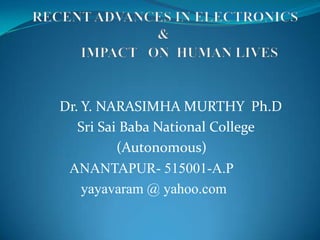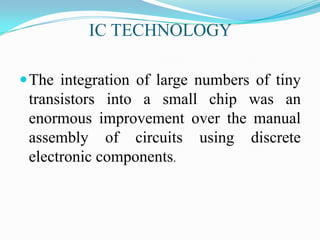The document discusses the history and development of electronics engineering and technology from vacuum tubes to modern integrated circuits and systems on a chip. Key developments include the invention of the transistor in 1947, the first integrated circuit in 1958, and advancements in microprocessors, memory, and computing power that have enabled technologies like smartphones, smart homes, wireless communications, and consumer electronics. These rapid advances have revolutionized many aspects of modern life.








































































